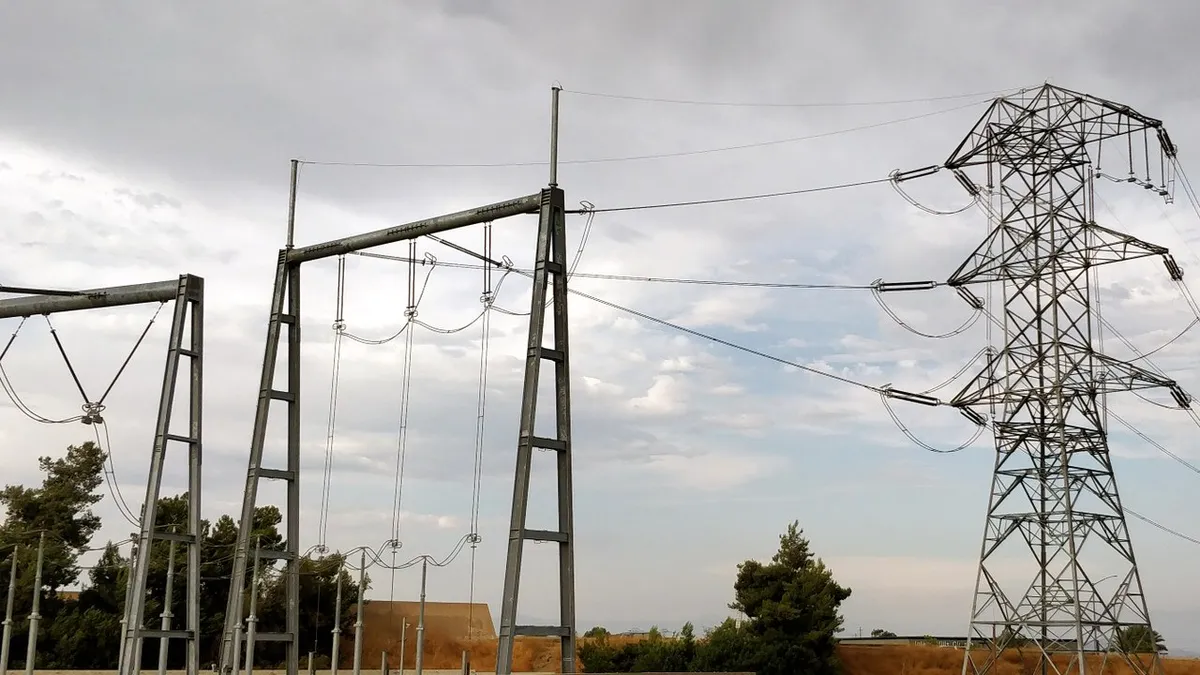Dive Brief:
-
The California Public Utilities Commission (CPUC) is urging federal regulators to reject a proposal by Southern California Edison (SCE) to capitalize and earn a rate of return on what the utility had previously deemed operations and maintenance (O&M) expenses for a transmission line.
-
The utility's proposal to earn a return on expenses for weed control and other environmental spending on its Tehachapi Renewable Transmission Project violates federal accounting rules, will inappropriately increase ratepayer costs and could set a "bad" precedent, the CPUC said in a Friday filing at the Federal Energy Regulatory Commission.
-
Separately, Pacific Gas & Electric wants to earn a profit on a roughly $400 million program painting transmission towers. The CPUC contends the painting should be an O&M expense, on which utilities don't profit.
Dive Insight:
The accounting disputes stem from the fact investor-owned utility income is linked to the return on equity (ROE) states and FERC allow them to earn on their investments.
SCE and PG&E would increase their returns by having what has typically been considered O&M expenses classified as capital costs. SCE, for example, earns a 10.3% ROE on its transmission investments.
When the CPUC approved SCE's Tehachapi transmission project, it required the utility to perform ongoing environmental activities, such as weed control, tree planting and endangered species monitoring.
Since the first part of the project came online in 2014, SCE considered those permit-related costs to be O&M expenses, according to the CPUC.
However, in a mid-November transmission rate filing at FERC, SCE included the spending as capital expenses, the state agency said.
"SCE's unilateral determination to change its accounting to increase rate base for Tehachapi inappropriately harms ratepayers and, if allowed, will set a bad precedent for future costs," the CPUC said.
In explaining the change, SCE said it "determined a new accounting treatment would be appropriate based upon its further research into the activities being defined as environmental restoration."
Costs related to permit requirements, even if those costs are incurred after a project is operating, should be considered an "integral part of construction" and therefore capitalized, the Edison International subsidiary based in Rosemead, California, said, citing a federal regulation.
"This is an overly broad interpretation [of the regulation] which would allow for capitalization of virtually any regular maintenance activity as long as that work kept the project in compliance with its operating licenses," the CPUC said. "Requiring a utility to incur costs to maintain and monitor previous capital investments to ensure ongoing compliance with permit conditions does not transform expenses into capital costs."
Because of SCE's change in its accounting, the utility's proposed transmission rate for 2022 is $764,100 too high, according to the CPUC.
"More significantly, the costs will continue to affect SCE customers many years into the future until the project is depreciated," the agency said, noting the utility plans to take the same accounting approach to other transmission projects.
The CPUC raised similar concerns when it asked FERC in October to reject PG&E's proposed finding that it can treat spending for a program to paint transmission towers as a capital expense instead of O&M.
PG&E contends the painting program will extend the life of the transmission towers by up to 25 years, making the spending eligible to be capitalized. FERC's chief accountant is reviewing PG&E's request for an interpretation on whether the utility's stance is correct.














